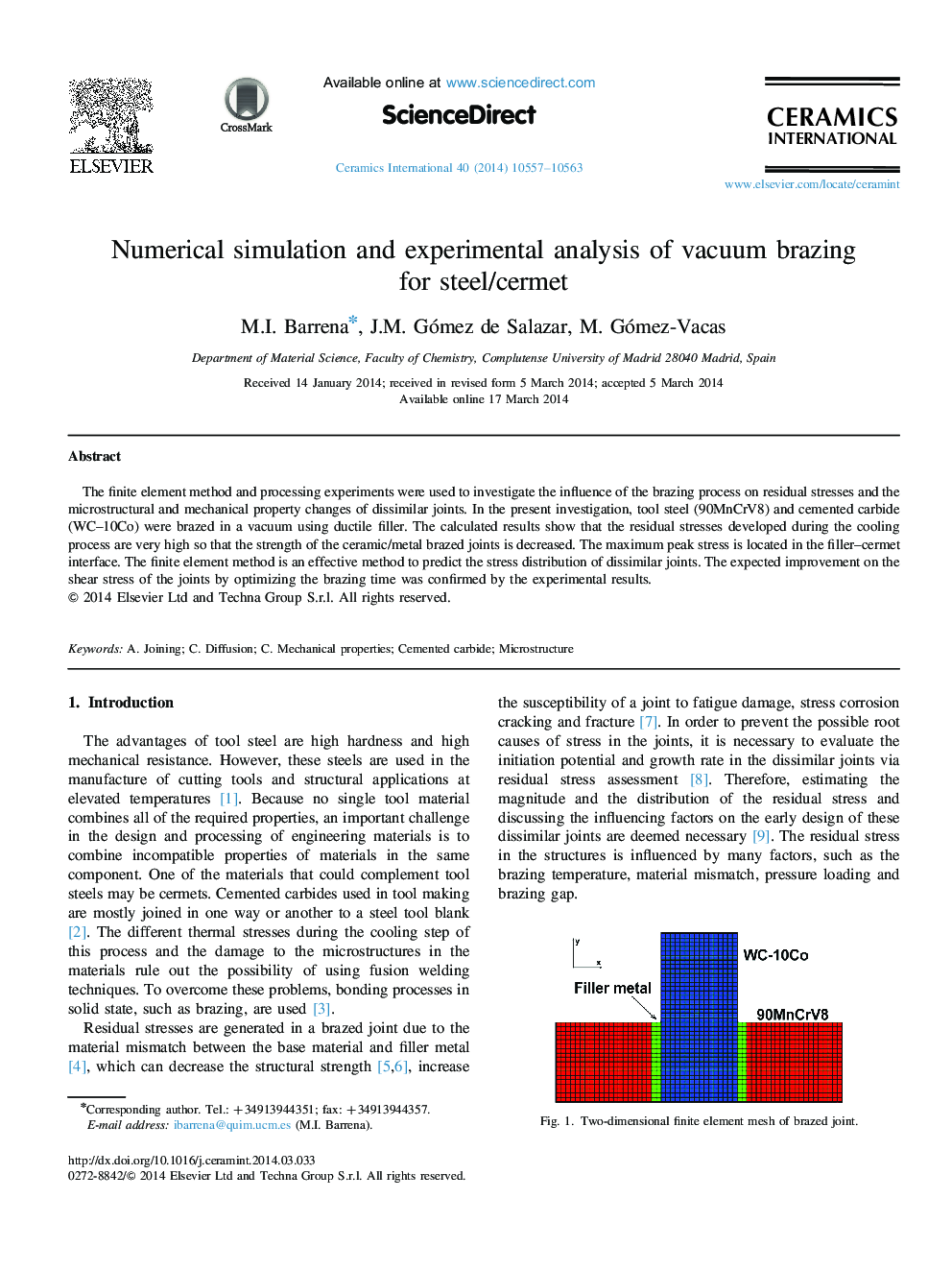| Article ID | Journal | Published Year | Pages | File Type |
|---|---|---|---|---|
| 1461032 | Ceramics International | 2014 | 7 Pages |
The finite element method and processing experiments were used to investigate the influence of the brazing process on residual stresses and the microstructural and mechanical property changes of dissimilar joints. In the present investigation, tool steel (90MnCrV8) and cemented carbide (WC–10Co) were brazed in a vacuum using ductile filler. The calculated results show that the residual stresses developed during the cooling process are very high so that the strength of the ceramic/metal brazed joints is decreased. The maximum peak stress is located in the filler–cermet interface. The finite element method is an effective method to predict the stress distribution of dissimilar joints. The expected improvement on the shear stress of the joints by optimizing the brazing time was confirmed by the experimental results.
